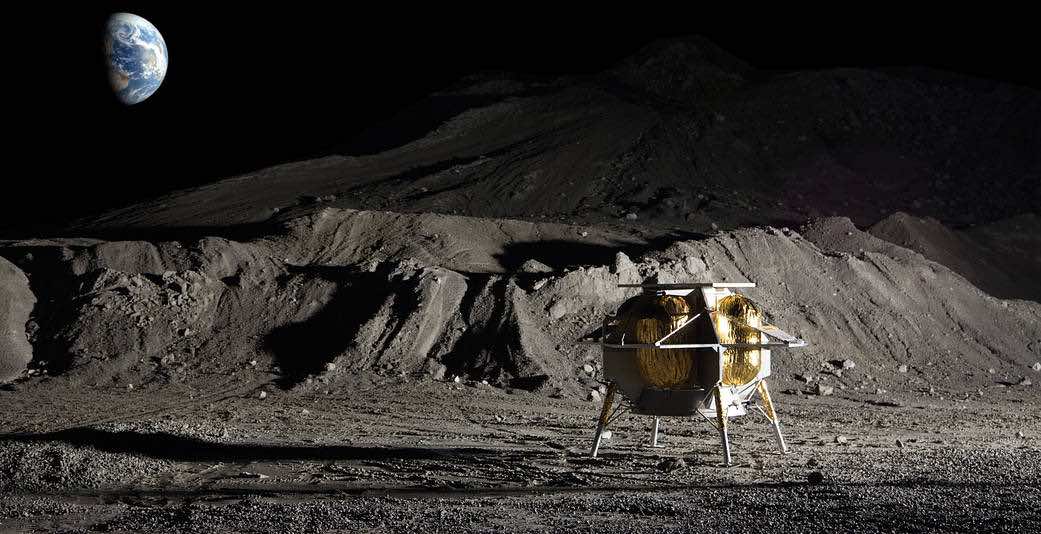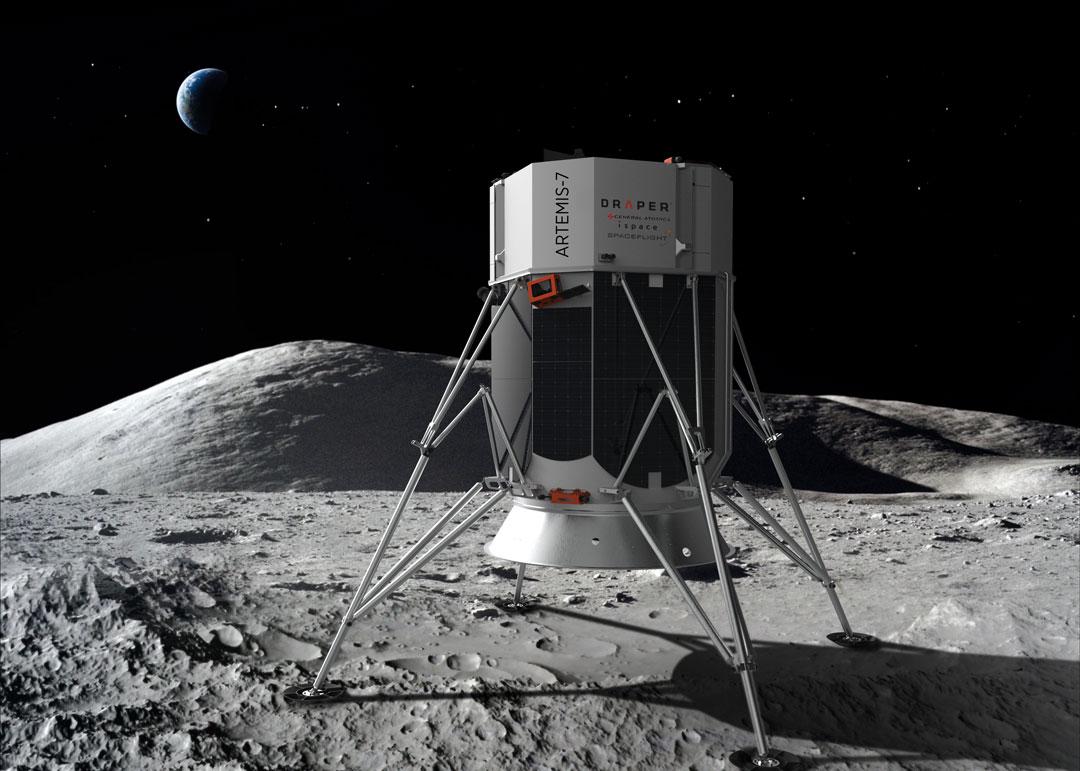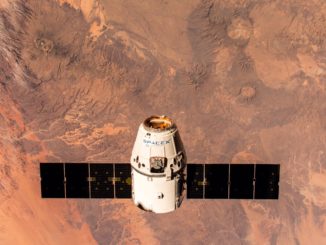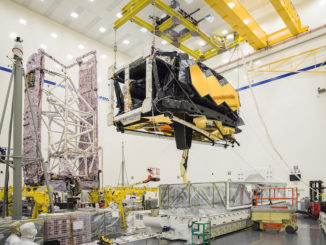
Within days, NASA is expected to select a winner from a roster of nine eligible companies to try and become the first commercial entity to accomplish a soft landing on the moon with a robotic spacecraft.
The privately-developed probe would be the vanguard in a series of unpiloted missions intended to deliver science instruments to the lunar surface and prepare for a human expedition as soon as 2024, the year by which the Trump administration has directed NASA to again land astronauts on the moon.
Following a model pioneered by NASA’s commercial cargo and crew contracts in support of the International Space Station, the space agency is turning to the private sector to ferry experiments, scientific instrumentation and other equipment to the lunar surface.
Steve Clarke, the deputy associate administrator for exploration in NASA’s science mission directorate, said Tuesday that agency officials are on track to award a contract, or task order, to industry for the first robotic lander mission by the end of May.
NASA selected nine companies in November to compete for up to $2.6 billion in contracts over the next decade to ferry scientific instruments and tech demo payloads to the moon aboard commercial robotic landers.
- Astrobotic Technology Inc., based in Pittsburgh
- Deep Space Systems, based in Littleton, Colorado
- Draper, based in Cambridge, Massachusetts
- Firefly Aerospace Inc., based in Cedar Park, Texas
- Intuitive Machines LLC, based in Houston
- Lockheed Martin Space, based in Littleton, Colorado
- Masten Space Systems Inc., based in Mojave, California
- Moon Express, based in Cape Canaveral, Florida
- Orbit Beyond, based in Edison, New Jersey
The nine companies U.S.-based companies, some of which have partnered with international space firms, are eligible to bid on task orders issued by NASA for individual missions. NASA released its first Commercial Lunar Payload Services, or CLPS, task order March 26.
Space agency officials have also selected 13 science and technology demonstration payloads from NASA centers to fly on the commercial lunar landers. As soon as next month, NASA will choose a slate of instruments from universities and other research institutions to also fly on the privately-developed moon probes.
Speaking during a meeting of the NASA Advisory Council’s Science Committee on Tuesday, Clarke said NASA will select a winner for the first mission task order by the end of May.
“They can choose to propose back to that task order or choose not to — it’s their choice — and if they do propose back, they tell us how they’re going to implement that, at what cost, and when can they deliver those instruments to the surface,” Clarke said.
NASA has received and assessed proposals submitted by the companies, Clarke said.
“We are imminently going to award the first delivery task order,” he said. “We are on track to do it before the end of May.”

None of the nine companies is guaranteed a CLPS contract win, and NASA is not funding any development costs for the commercial landers. That money must come from other sources.
NASA plans to stage a series of competitions among the nine CLPS providers over the next few years. Clarke said other companies will be added, or “on-ramped,” to the CLPS program.
“We would like to build up to a cadence of roughly one to two delivery services per year through roughly the ’23 timeframe,” Clarke said. “If the CLPS model is successful, which we hope, we have many of these companies that we see here, and others that may join through on-ramps, (so) we can have multiple partners that can deliver instruments to the surface, and eventually lunar orbit.”
NASA sees the CLPS program as a proof-of-concept to assess whether commercial industry is ready to take on bigger roles in human exploration of the moon. The agency currently foresees putting a commercial company in charge of designing, building and launching a human-rated lunar lander to be used by astronauts as soon as 2024, according to Bill Gerstenmaier, associate administrator of NASA’s human exploration and operations mission directorate.
“We’re going to use (CLPS), both the technical success, the technical problems, as well as the financial things that we learn from that, we’ll use that as a data point that will help us build more refined budgets going forward,” Gerstenmaier said.
NASA’s CLPS initiative is also aimed at finding a less expensive way to deliver science instruments to the moon than through a government-run robotic lander program. Officials also hope the CLPS program will provide a steady base of government business for companies developing lunar landers, with a goal of fostering commercial business models for deep space exploration.
The CLPS program is organized in a similar way to NASA’s procurement of commercial launch, cargo and crew transportation services.
“NASA is buying a service,” Clarke said. “We’re buying a ride to the surface of the moon. We don’t own the lander. We don’t own the launch service. That’s up to the CLPS provider.”
Clarke said the 13 NASA payloads selected to fly to the moon on the early CLPS missions will be ready for launch by the end of 2019. But none of the nine companies competing for CLPS task orders have flight-proven landers, and they are unlikely to be ready to deliver NASA instruments to the moon’s surface until 2020 or 2021, according to industry officials.
A more definitive schedule for the first CLPS mission may be announced with the first task order.
One privately-developed mission has already attempted a landing on the moon. The Beresheet spacecraft, developed by the Israeli non-profit SpaceIL, launched in February and tried to land on the moon April 11, but a guidance problem during descent caused the probe to crash on the lunar surface.
SpaceIL is not eligible to compete for CLPS task orders because it is not a U.S.-based company. But U.S. companies are free to work with international partners to supply hardware and designs for lunar landers, as the Massachusetts based firm Draper is doing with Tokyo-based ispace, which acts as a design agent for Draper’s Artemis 7 lunar lander.
The early CLPS missions will be of limited size and duration, with landers capable of carrying a minimum of 22 pounds (10 kilograms) of scientific instrumentation. The first commercial landers are not expected to survive the two-week-long lunar night, when temperatures on the moon plummet below minus 250 degrees Fahrenheit (minus 156 degrees Celsius).
In the future, NASA wants to work with companies on bigger landers and mobile rovers, including spacecraft capable of landings at the lunar poles, or on the moon’s far side, with the support of a communications relay craft.
The CLPS program was initiated as NASA aimed for a human landing on the moon in 2028. But that timeline has been accelerated by four years with the Trump administration goal of returning astronauts to the lunar surface by 2024, targeting a landing near the moon’s south pole.
No U.S. mission, crewed or robotic, has successfully soft-landed on the moon since the Apollo 17 astronauts departed in December 1972.
Measurements from science orbiters suggest that permanently-shadowed craters near the lunar south pole contain reservoirs of water ice, which future spacecraft or a moon base could tap to generate rocket fuel, oxygen, drinking water and other consumables.
“We’re doing a NASA in-house development of a rover that will be ready to deliver to the surface of the moon in late 2022, and we are starting in the south pole region because we would like to do some ground truth of the volatiles (such as water ice) in that area, and potentially influence the first human return mission destination,” Clarke said.
NASA is also working with the CLPS providers, other companies, and international partners in Europe and Canada on rover concepts, Clarke said Tuesday.
While the CLPS robotic lunar landing program is funded in NASA’s budget, money to enable a human landing in 2024 still must be appropriated by Congress.
The White House released a revised budget request last week asking Congress for an additional $1.6 billion for NASA in fiscal year 2020, which begins Oct. 1, to accelerate work on a commercially-developed human-rated lunar lander and keep the agency’s government-owned Space Launch System heavy-lift rocket and Orion crew capsule on track for an unpiloted test flight around the moon as soon as late 2020, followed by a crewed test flight around the moon in late 2022.
Meanwhile, NASA wants to construct a mini-space station, or Gateway, in lunar orbit to serve as a staging point and safe haven for astronauts heading to the moon.
A core module, providing power and solar-electric propulsion to the Gateway, could be ready for launch by the end of 2022. NASA is scheduled to select a contractor this summer to build and launch the power and propulsion module. A contractor for a pressurized crew habitat could be selected by NASA later this year, with a goal of launching the habitation module to the Gateway in 2023.
If those missions go according to plan — and on schedule — the moon landing program, now named Artemis, would be ready to attempt a human return to the lunar surface on the Artemis 3 mission in 2024. As envisioned by NASA, the Artemis program would continue with with moon landings at least once per year through 2028 on progressively more ambitious surface expeditions to investigate water resources, and additional launches to add pieces to the Gateway station in orbit.
But that assumes Congress approves the extra $1.6 billion for NASA in fiscal year 2020, on top of the Trump administration’s previous fiscal year 2020 request for $21 billion for the space agency. NASA Administrator Jim Bridenstine said last week that billions of dollars more will be needed to pad NASA’s budget in the early 2020s.
NASA last week also announced 11 companies to conduct studies and produce prototypes of human-class lunar landers. The companies selected to work on lunar descent, ascent, transfer and refueling technology are Aerojet Rocketdyne, Blue Origin, Boeing, Dynetics, Lockheed Martin, Masten Space Systems, Northrop Grumman Innovation Systems, Orbit Beyond, Sierra Nevada Corp., SpaceX and SSL.
Email the author.
Follow Stephen Clark on Twitter: @StephenClark1.



